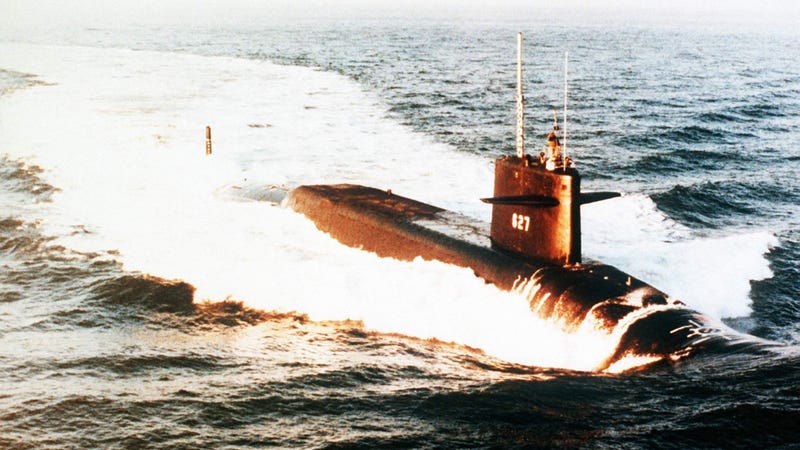
In the thick of the Cold War, the nuclear submarine USS James Madison crashed into a Soviet nuclear sub off the coast of Scotland in November of 1974. It was one of the most mysterious episodes of the Cold War, and now we finally have official confirmation from a declassified memo published in the CIA document dump late last week.
Advertisement
In the memo to Secretary of State Henry Kissinger, National Security Advisor Brent Scowcroft wrote that he had just gotten word that one of its ballistic missile subs was involved in a crash with a Soviet sub. Both of the submarines surfaced and the Soviet one submerged again. The brief memo ends with “there is no report yet of the extent of damage. Will keep you posted,” just as you would tell your boss at your normal not-nuclear-submarine job.
Have just received word from the Pentagon that one of our Poseidon submarines has just collided with a Soviet submarine. The SSBN James Madison was departing Holy Loch to take up station when it collided with a Soviet submarine waiting outside the port to take up trail. Both submarines surfaced and the Soviet boat subsequently submerged again. There is no report yet of the extent of damage. Will keep you posted.
Warm regards.
The CIA tried to keep the incident quiet, but the Washington Post and National Intelligence Daily managed to find out about the collision back in 1975, as The Guardian notes. Still, the CIA did not release anything on what happened that day until it released a cache of declassified documents this month.
Advertisement
Hans Kristensen, a nuclear weapons expert, told the Sun that the accident could have been catastrophic had either of the crews mistook the collision as an attack:
The submarines could also have capsized with loss of all on board, leaving ‘hot’ nuclear reactors in relatively shallow waters close to rich fishing grounds.
But, for the sake of humanity, World War III didn’t take place and both ships parted ways without further incident. Though, this would not be the last time two nuclear subs hit each other.
Back in February of 2009, Britain’s HMS Vanguard and France’s Le Triomphant collided. Both were carrying nuclear weapons on board at the time of the incident. None of the crew were injured and both subs were able to return to their respective bases. Though the Vanguard sustained at least 50 million pounds in damage. The National Interest quotes William McNeilly, who served in the U.K.’s nuclear submarine program, as saying, “The French submarine had took a massive chunk out of the front of HMS Vanguard and grazed down the side of the boat.” The Triomphant caught damage on its Thales active sonar dome.
Sponsored
Naval analyst Richard Cobbold told CNN at the time that it is very possible that neither sub knew they were so close to each other at the time of the collision.
Modern submarines are very, very quiet. In many types of water conditions they might not hear the approach of another submarine.
The problem is that most modern submarines “see” the underwater world around them by listening to the sounds of the ocean using huge hydrophones. If they want to know something’s coming, they just listen for it. Which usually works, unless the massive metal object heading towards you is absolutely silent in its own right.
Advertisement
Advertisement
To ensure that such accidents did not occur again, the French proposed at the time of the crash that they coordinate submarine routes. But such a move would defeat the purpose of them going undetected in the first place, and it’s not clear if this plan ever came to fruition. However, both nations are NATO allies, so such coordination would not be too far fetched.
The original memo is embedded below:















